Causes of high hcg levels. Understanding High hCG Levels: Causes, Implications, and Medical Significance
Why do hCG levels rise during pregnancy. How can elevated hCG indicate certain medical conditions. When should you be concerned about high hCG levels. What role does hCG play in cancer diagnosis and treatment monitoring.
The Fundamentals of Human Chorionic Gonadotropin (hCG)
Human chorionic gonadotropin, commonly known as hCG or b-hCG, is a hormone that plays a crucial role in various physiological processes. Primarily associated with pregnancy, hCG is produced by the placenta shortly after conception. However, its presence and elevated levels can also be indicative of certain medical conditions, including some types of cancer.
Understanding the significance of hCG levels is essential for both healthcare providers and patients. High hCG levels can provide valuable insights into a person’s health status, aiding in the diagnosis and monitoring of various conditions.
What exactly is hCG and how is it produced?
hCG is a glycoprotein hormone composed of two subunits: alpha and beta. The alpha subunit is identical to other pituitary hormones, while the beta subunit is unique to hCG. During pregnancy, the placenta begins producing hCG shortly after implantation of the fertilized egg in the uterus. This hormone supports the development of the embryo and maintains the corpus luteum, which produces progesterone necessary for sustaining the pregnancy.
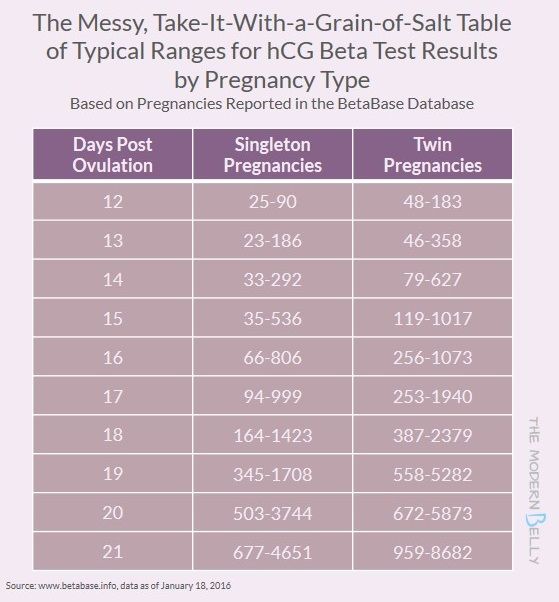
The Diagnostic Value of hCG Testing
hCG testing serves multiple purposes in medical diagnostics and monitoring. Healthcare providers often rely on hCG tests to:
- Confirm pregnancy
- Diagnose certain types of cancer
- Evaluate the effectiveness of cancer treatments
- Monitor for cancer recurrence during follow-up care
The versatility of hCG testing makes it an invaluable tool in both obstetrics and oncology.
How is an hCG test performed?
An hCG test can be conducted using either a blood or urine sample. Blood tests are typically more sensitive and can detect lower levels of hCG compared to urine tests. For a blood test, a healthcare professional will draw a small amount of blood from a vein in your arm. Urine tests can be performed at home or in a medical setting and involve collecting a urine sample in a sterile container.
Causes of Elevated hCG Levels
While pregnancy is the most common cause of increased hCG levels, several other factors can lead to elevated readings. Understanding these causes is crucial for accurate interpretation of test results and appropriate medical management.

Pregnancy-related causes of high hCG
During a normal pregnancy, hCG levels rise rapidly in the first trimester, often doubling every 48-72 hours. Higher than expected hCG levels in pregnancy may indicate:
- Multiple pregnancies (twins, triplets, etc.)
- Molar pregnancy
- Down syndrome or other chromosomal abnormalities
Non-pregnancy related causes of elevated hCG
Several medical conditions and lifestyle factors can lead to increased hCG levels in non-pregnant individuals:
- Certain gastrointestinal diseases (e.g., inflammatory bowel disease)
- Stomach ulcers
- Cirrhosis of the liver
- Cannabis use
- Germ cell tumors of the ovary or testicle
- Various types of cancer (liver, stomach, pancreatic, lung, breast, skin)
hCG and Cancer: A Complex Relationship
The connection between hCG and cancer is multifaceted, with this hormone serving as both a diagnostic marker and a potential indicator of treatment efficacy.
How does hCG relate to cancer diagnosis?
Elevated hCG levels can be a sign of certain types of cancer, particularly those originating from germ cells or trophoblastic tissue. Gestational trophoblastic disease (GTD), which includes conditions like molar pregnancy and choriocarcinoma, is characterized by abnormal growth of placental tissue and often associated with high hCG levels.
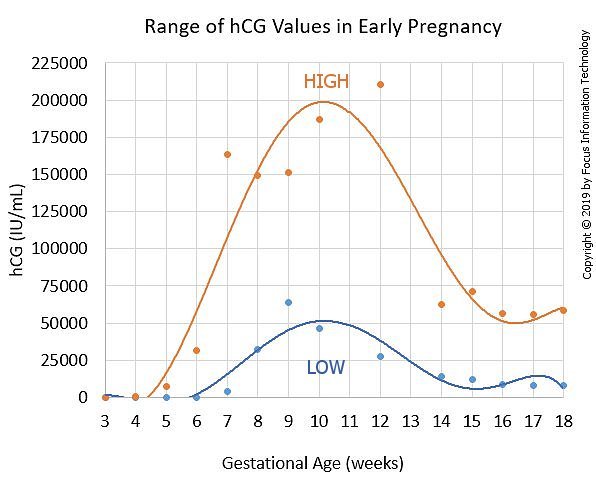
Germ cell tumors of the ovary and testicle, both cancerous and non-cancerous, may also produce hCG. This makes hCG testing a valuable tool in the diagnosis and monitoring of these conditions.
Can hCG levels indicate cancer treatment effectiveness?
Indeed, hCG levels play a crucial role in monitoring cancer treatment efficacy. Healthcare providers use hCG tests to track a patient’s response to treatment and detect potential recurrence:
- A decrease in hCG levels or a return to normal range may indicate that the treatment is working effectively.
- Unchanged or increasing hCG levels might suggest that the cancer is not responding to treatment, continuing to grow, or has recurred.
Interpreting hCG Test Results
Interpreting hCG test results requires careful consideration of various factors, including the individual’s medical history, current symptoms, and other diagnostic findings.
What do different hCG levels indicate?
hCG levels can vary widely depending on the underlying cause:
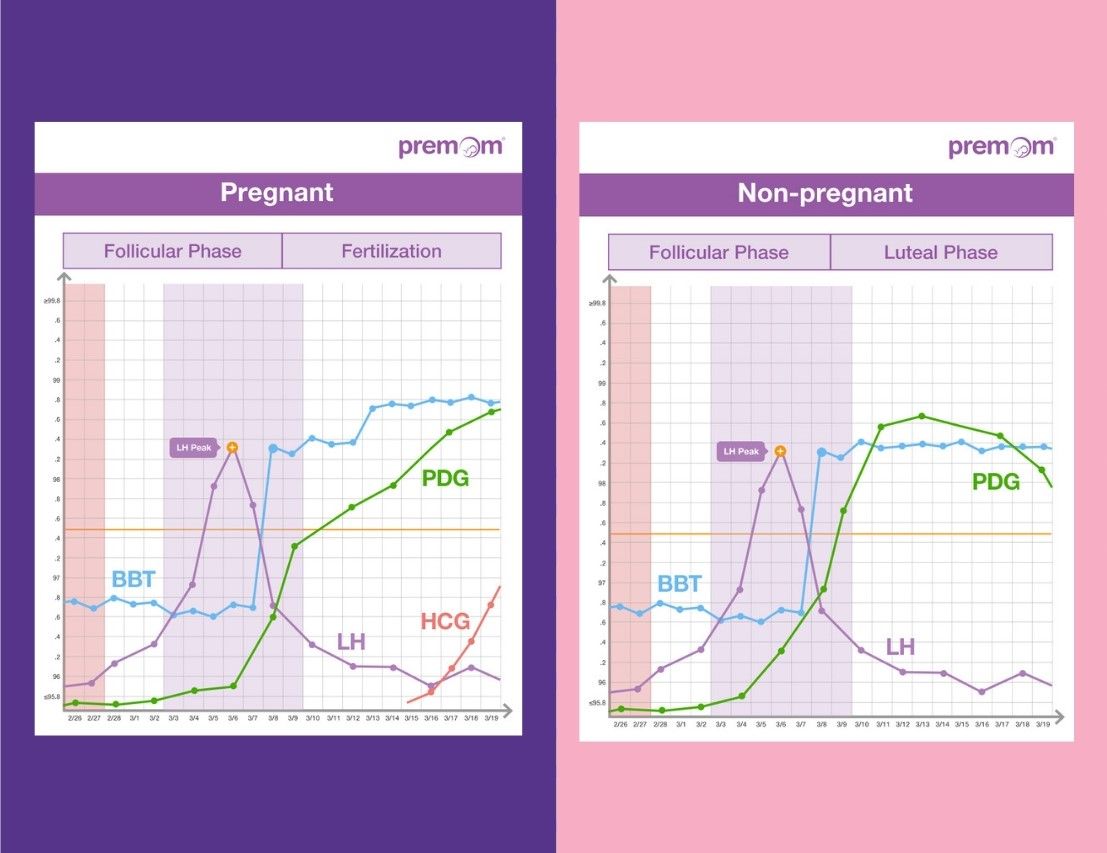
- In early pregnancy, hCG levels typically double every 48-72 hours.
- Non-pregnant women and men usually have very low or undetectable levels of hCG.
- Levels above 5 mIU/mL are generally considered positive for pregnancy.
- In cases of cancer, hCG levels can range from slightly elevated to extremely high, depending on the type and stage of the disease.
When should you be concerned about high hCG levels?
While elevated hCG levels are often associated with normal pregnancy, there are situations where they may warrant further investigation:
- Unexpectedly high levels during pregnancy could indicate multiple gestations or potential complications.
- Elevated levels in non-pregnant individuals may suggest the presence of certain cancers or other medical conditions.
- Persistent high levels after cancer treatment might indicate incomplete response or recurrence.
The Role of hCG in Cancer Monitoring and Follow-up Care
For patients with hCG-producing cancers, ongoing monitoring of this hormone is an essential component of follow-up care.

How frequently should hCG levels be checked during cancer follow-up?
The frequency of hCG testing during cancer follow-up depends on various factors, including the type of cancer, stage of disease, and individual treatment plan. Generally, patients may undergo hCG testing:
- Weekly or bi-weekly during active treatment
- Monthly for several months after completing treatment
- Every 3-6 months for the first year or two of remission
- Annually or as recommended by the oncologist for long-term follow-up
It’s important to note that these are general guidelines, and the specific monitoring schedule will be tailored to each patient’s individual needs and risk factors.
Advances in hCG Research and Future Perspectives
As our understanding of hCG continues to evolve, researchers are exploring new applications and implications of this hormone in various medical fields.
What new developments are emerging in hCG research?
Recent advancements in hCG research include:
- Development of more sensitive and specific hCG assays for early cancer detection
- Exploration of hCG’s potential role in predicting pregnancy outcomes
- Investigation of hCG-based therapies for certain autoimmune diseases
- Studies on the use of hCG in male fertility treatments
These emerging areas of research hold promise for expanding the clinical applications of hCG beyond its current uses in pregnancy and cancer diagnostics.

How might future hCG testing methods improve patient care?
Future developments in hCG testing may lead to:
- More accurate and earlier detection of pregnancy complications
- Improved screening methods for certain types of cancer
- Personalized monitoring protocols for cancer patients based on individual hCG profiles
- Non-invasive testing methods that provide rapid and reliable results
As technology advances, we can expect hCG testing to become more precise, accessible, and informative, ultimately enhancing patient care across various medical disciplines.
Practical Considerations for Patients Undergoing hCG Testing
For individuals scheduled to undergo hCG testing, understanding the process and potential implications can help alleviate anxiety and ensure accurate results.
How should one prepare for an hCG test?
Preparation for an hCG test is typically minimal:
- No fasting or special dietary restrictions are usually required.
- Inform your healthcare provider about any medications or supplements you’re taking, as some may affect hCG levels.
- For urine tests, it’s often recommended to use the first morning urine for the most concentrated sample.
- Follow any specific instructions provided by your healthcare team.
What questions should patients ask their healthcare provider about hCG testing?
To ensure a thorough understanding of the test and its implications, consider asking your healthcare provider:

- Why is this test being recommended?
- What do the results mean in my specific situation?
- How will the results impact my treatment plan or follow-up care?
- Are there any factors that could affect the accuracy of the test results?
- When can I expect to receive the results?
- Will I need repeat testing, and if so, how often?
By engaging in open communication with your healthcare provider, you can gain valuable insights into your health status and make informed decisions about your care.
Human chorionic gonadotropin (hCG or b-hCG)
Home
Treatments
Tests and procedures
org/ListItem” aria-current=”page”>
Human chorionic gonadotropin (hCG or b-hCG)
Home
Treatments
Tests and procedures
org/ListItem” aria-current=”page”>
Human chorionic gonadotropin (hCG or b-hCG)
Human chorionic gonadotropin (hCG or b-hCG) is a hormone that the placenta makes when a woman is pregnant. Certain cancer cells can also make it.
An hCG test may be done to:
- confirm that you are pregnant
- help diagnose some types of cancer and other conditions
- find out if cancer treatment is working
- watch for cancer coming back during follow-up care
The amount of hCG is usually measured by a blood test taken by a needle in the arm. It can also be measured from a urine sample. You don’t need to do anything special to get ready for the test.
Your hCG levels may be higher than normal for many different reasons.
The level of hCG in your blood may be higher than normal because you are pregnant or you have a certain kind of bowel disease, a stomach ulcer or cirrhosis of the liver. Your HCG level can also be high if you smoke cannabis (marijuana).
Your HCG level can also be high if you smoke cannabis (marijuana).
An increased level of hCG in the blood may help your doctor diagnose:
- gestational trophoblastic disease (GTD)
- germ cell tumours of the ovary and testicle (both cancerous and non-cancerous tumours)
If you have liver, stomach, pancreatic, lung, breast or skin cancer, the level of hCG in your blood may be higher than normal.
The hCG test results can help your doctor know if treatment is working:
- A decreased level or a return to normal levels of hCG may mean that the treatment is working.
- An unchanged level of hCG or an increase in levels may mean that the cancer is not responding to treatment, is still growing or has come back (recurred).
Depending on the result, your doctor will decide if you need more tests, any treatment or follow-up care.
OneCare Media
. Testing.com: hCG Tumor Marker
. Seattle, WA
Seattle, WA
: 2014
: https://www.testing.com/.American Cancer Society
. Gestational Trophoblastic Disease
. 2014
: https://www.cancer.org/.American Society of Clinical Oncology
. Gestational Trophoblastic Disease
. 2014
: https://www.cancer.net/.Goldstein DP, Berkowitz RS, Horowitz NS
. Gestational trophoblastic diseases. DeVita VT Jr, Lawrence TS, Rosenberg SA. Cancer: Principles and Practice of Oncology. 10th ed. Philadelphia: Wolters Kluwer Health/Lippincott Williams & Wilkins; 2015: 75: 1069-1074.National Cancer Institute
. Tumor Markers
Tumor Markers
. Bethesda, MD
: National Cancer Institute
; 2015
: https://www.cancer.gov/.
Our enewsletter
Enter your email to receive occasional news and important updates!
Ranges, what they mean, and when to seek help
hCG is a hormone that plays an important role in pregnancy, and levels can vary widely at this time and between individuals. Outside pregnancy, a high hCG level may be a sign of a health condition, such as cancer or liver disease.
The full name of this hormone is human chorionic gonadotropin (hCG).
In this article, we look at hCG in detail — including normal ranges during pregnancy, what happens when levels fluctuate, and how doctors use the measurements to identify underlying health conditions.
Share on PinterestA doctor may measure a person’s hCG level during pregnancy to identify any underlying health problems.
This naturally occurring hormone is present in males and females. But it is usually associated with pregnancy because it plays a key role.
To maintain a pregnancy, hCG triggers the body to produce another hormone, progesterone. It can also help:
- promote the development of new blood vessels in the uterus
- smooth the muscle cells in the middle layer of the uterine wall, which is important for maintaining pregnancy
A person may be familiar with hCG because it is the hormone that pregnancy tests check for in urine. A home test can first detect hCG levels that indicate pregnancy about 12–14 days after conception.
A doctor can also check for pregnancy by ordering a blood test to measure hCG levels.
Testing the level of hCG in the blood can also help a doctor identify certain underlying health conditions, including some cancers, and check how effective cancer treatment is.
Levels of hCG can vary widely from one pregnant woman to another.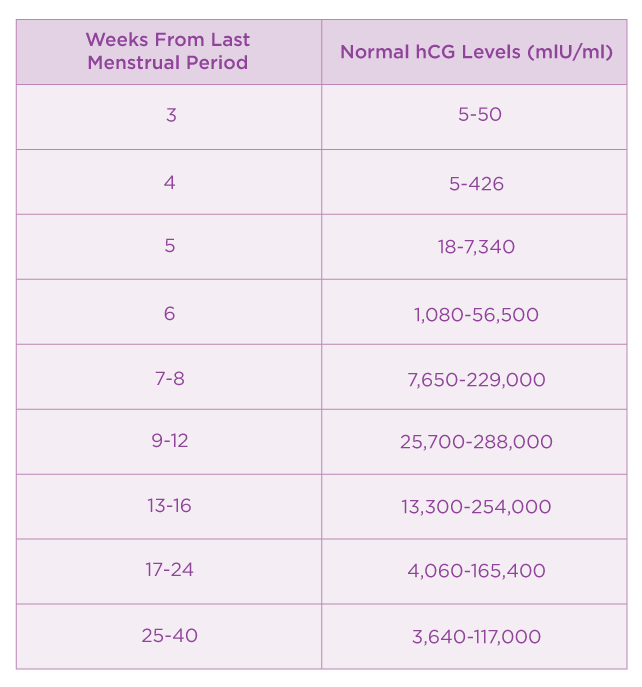
A test gives an hCG measurement in units per liter (U/l).
Below, find typical levels of hCG throughout pregnancy:
| Week since last menstrual period | Standard hCG range (U/l) |
| 4 | 0–750 |
| 5 | 200–7,000 |
| 6 | 200–32,000 |
| 7 | 3,000–160,000 |
| 8–12 | 32,000–210,000 |
| 13–16 | 9,000–210,000 |
| 16–29 | 1,400–53,000 |
| 29–41 | 940–60,000 |
During the first 8 weeks of pregnancy, concentrations of hCG in the blood and urine usually double every 24 hours.
Levels of the hormone typically peak at around 10 weeks, decline until 16 weeks, then remain constant.
During pregnancy, low levels of hCG are not always a cause for concern. This finding may only indicate that there could be a health issue to investigate.
Other times, low hCG can point to a more serious problem. According to a 2018 study, hCG levels were significantly decreased in pregnant women who went on to experience pregnancy loss.
According to a 2018 study, hCG levels were significantly decreased in pregnant women who went on to experience pregnancy loss.
Learn more about pregnancy loss.
Low hCG can also indicate that the fetus is not growing appropriately. A 2017 study found that low hCG was associated with decreased fetal growth and lower birth weight.
There is no treatment for hCG levels that are low.
Find out more about low hCG levels.
As with low levels, high levels of hCG do not necessarily indicate a problem with a pregnancy. Some women simply have higher levels.
If a woman has high hCG levels, it could point to twins or triplets, though only a scan can confirm this.
Sometimes, above-average levels of hCG indicate a higher chance of Down syndrome. A doctor can use blood tests and scans to check.
Gestational trophoblastic disease
One medical concern about higher levels of hCG is that they may indicate gestational trophoblastic disease (GTD).
GTD can occur during or after pregnancy.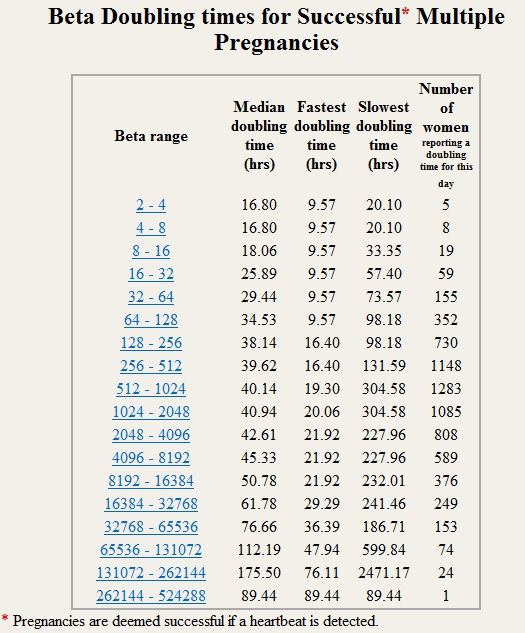 It causes abnormal cells to grow in the uterus. Some can be cancerous, though most are benign.
It causes abnormal cells to grow in the uterus. Some can be cancerous, though most are benign.
Treatment depends on the mass of cells and whether it is cancerous or benign.
To remove the mass, the doctor may recommend dilation and curettage, which involves sucking away the mass with a surgical vacuum and gently scraping away any remaining abnormal cells.
Or, a doctor may recommend a hysterectomy, to remove the uterus.
After the removal, a person may need chemotherapy or other treatment. This may be more likely if hCG levels remain high.
Preeclampsia
High hCG levels may also indicate preeclampsia, a pregnancy-linked condition that involves swelling and a sudden rise in blood pressure.
In a 2012 study, for example, researchers found that hCG levels were significantly increased in women with severe preeclampsia.
It may be safe for a woman with mild preeclampsia to wait and deliver as usual. But if a woman develops the condition and the pregnancy is at 34–37 weeks or later, it may be necessary to induce delivery.
Treatment tends to involve close monitoring, which may need to take place in a hospital, as well as medication to control blood pressure and prevent seizures.
Learn more about preeclampsia.
Normal levels of hCG are typically undetectable in females who are not pregnant and in males.
Higher levels can sometimes point to an underlying health problem, such as:
- some cancers, including cancer of the liver, stomach, pancreas, lung, breast, or skin
- germ cell tumors of the ovary and testicles, which may be benign or malignant
- cirrhosis
- stomach ulcers
- inflammatory bowel disease
A 2011 study found that males with reduced sperm count and other issues related to semen had significantly lower levels of hCG.
Doctors sometimes prescribe hCG to combat the symptoms of conditions such as hypogonadism, in which the testes do not produce enough testosterone, sperm, or both.
Pregnant women experiencing vaginal bleeding or abdominal cramps should receive medical attention.
Everyone should see a doctor if they:
- are having difficulty conceiving
- notice a lump in their breasts or testicles
- have blood in their urine, stool, vomit, or phlegm
- have a cough that does not go away, breathlessness, or chest pain
- notice changes in bowel movements
- have unexplained weight loss
- notice skin changes, such as moles that change shape or bleed
HCG is a hormone that everyone has.
It plays a key role in pregnancy, during which levels rise significantly. Especially high or low levels during pregnancy can indicate a problem, but this is not always the case.
In other people, high levels of hCG sometimes indicate an underlying health condition, possibly one that affects fertility.
Beta-subunit of human chorionic gonadotropin (beta-hCG)
Beta-subunit of human chorionic gonadotropin is one of the subunits of a specific hormone molecule – chorionic gonadotropin, which is formed in the shell of the human embryo. The analysis is carried out for the purpose of early diagnosis of pregnancy, detection of its complications and diagnosis of diseases associated with impaired hCG secretion.
The analysis is carried out for the purpose of early diagnosis of pregnancy, detection of its complications and diagnosis of diseases associated with impaired hCG secretion.
Synonyms Russian
Beta subunit of hCG.
Synonyms English
Human Chorionic Gonadotropin, hCG, b-HCG, Quantitative hCG; Beta hCG, Total hCG, Total beta hCG.
Test method
Electrochemiluminescent immunoassay (ECLIA).
Detection range: 0.1 – 1,000,000 IU/L.
Units
IU/l (international unit per litre).
What biomaterial can be used for research?
Venous blood.
How to properly prepare for an examination?
- Do not smoke for 30 minutes before the test.
Study Overview
Human chorionic gonadotropin (hCG) is a hormone produced in the fetal membrane of the human embryo. It is an important indicator of the development of pregnancy and its deviations. It is produced by the cells of the chorion (the shell of the embryo) immediately after it is attached to the wall of the uterus (this happens only a few days after fertilization). The embryo at this stage of pregnancy is a microscopic vesicle filled with fluid, the walls of which are made up of rapidly multiplying cells. From one part of these cells, the unborn child (embryoblast) develops, while from the cells outside the embryo, a trophoblast is formed – that part of the fetal egg, with which it is attached to the wall of the uterus. Later, the chorion is formed from the trophoblast.
It is an important indicator of the development of pregnancy and its deviations. It is produced by the cells of the chorion (the shell of the embryo) immediately after it is attached to the wall of the uterus (this happens only a few days after fertilization). The embryo at this stage of pregnancy is a microscopic vesicle filled with fluid, the walls of which are made up of rapidly multiplying cells. From one part of these cells, the unborn child (embryoblast) develops, while from the cells outside the embryo, a trophoblast is formed – that part of the fetal egg, with which it is attached to the wall of the uterus. Later, the chorion is formed from the trophoblast.
Chorion performs the function of nourishing the embryo, being an intermediary between the body of the mother and the child. In addition, it produces chorionic gonadotropin, which, on the one hand, affects the formation of the child, on the other hand, it specifically affects the mother’s body, ensuring a successful pregnancy.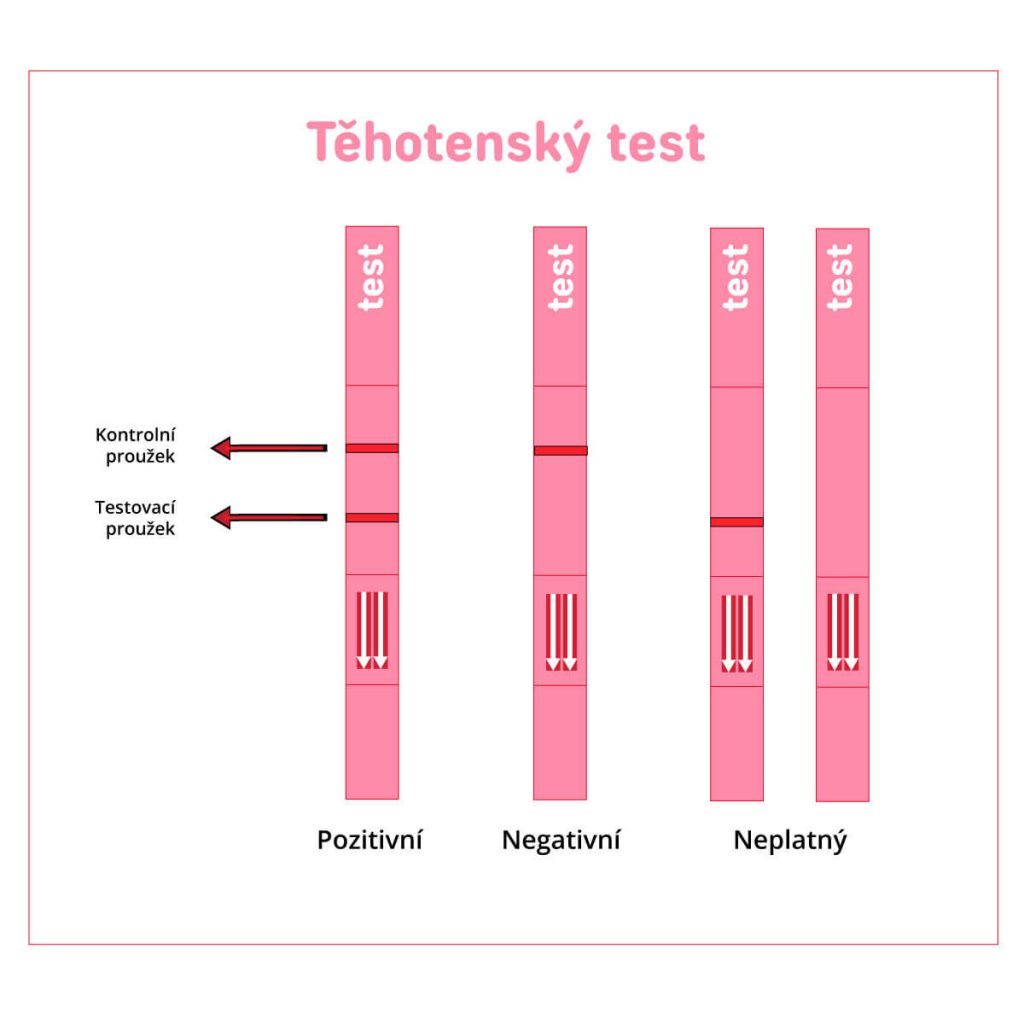 The appearance of this hormone in the body of a future mother at the initial stage of pregnancy explains the importance of the test for early diagnosis of pregnancy.
The appearance of this hormone in the body of a future mother at the initial stage of pregnancy explains the importance of the test for early diagnosis of pregnancy.
Chorionic gonadotropin stimulates the secretory function of the corpus luteum of the ovaries, which should produce the hormone progesterone, which maintains the normal state of the inner lining of the uterine wall – the endometrium. The endometrium provides reliable attachment of the fetal egg to the mother’s body and its nutrition with all the necessary substances.
Due to a sufficient amount of human chorionic gonadotropin, the corpus luteum, which normally exists for only about 2 weeks during each menstrual cycle, does not undergo resorption after successful conception and remains functionally active throughout the entire period of pregnancy. Moreover, it is in pregnant women under the influence of chorionic gonadotropin that it produces very large amounts of progesterone. In addition, CG stimulates the production of estrogens and weak androgens by ovarian cells and promotes the development of the functional activity of the chorion itself, and later the placenta, which is formed as a result of the maturation and growth of the chorionic tissue, improving its own nutrition and increasing the number of chorionic villi.
Thus, the role of human chorionic gonadotropin lies in the specific and multifaceted effect on the body of a woman and the fetus in order to ensure a successful pregnancy. Based on the analysis for chorionic gonadotropin, the presence of chorionic tissue in the woman’s body is determined, and hence pregnancy.
According to its chemical structure, chorionic gonadotropin is a combination of protein and complex carbohydrates, consisting of two parts (subunits): alpha and beta. The alpha subunit of chorionic gonadotropin is completely identical to the alpha subunits of the luteinizing, follicle-stimulating and thyroid-stimulating hormones of the pituitary gland, which perform functions that are largely similar to the function of chorionic gonadotropin, but not during pregnancy. The beta subunit of chorionic gonadotropin is unique, which, on the one hand, determines the specificity of its action, and, on the other hand, allows it to be identified in biological media. In this regard, this test is called “beta-subunit of human chorionic gonadotropin (beta-hCG)”.
Knowing the level of beta-hCG in the blood, it is possible to diagnose pregnancy already on the 6-8th day after conception (in the urine, the concentration of beta-hCG reaches the diagnostic level 1-2 days later). Normally, during pregnancy between the 2nd and 5th weeks, the amount of beta-hCG doubles every 1.5 days. With multiple pregnancy, it increases in proportion to the number of fetuses. The maximum level of hCG reaches the 10-11th week, and then gradually decreases. This is due to the fact that from the beginning of the 2nd third of pregnancy, the placenta is able to independently produce enough estrogens and progesterone, with the participation of which the endometrium functions normally, regardless of the secretion of hormones in the ovarian corpus luteum. At the same time, the concentration of CG in the blood of a pregnant woman gradually decreases, and the corpus luteum can function without the effects of CG. During this period, the role of the hormone is to stimulate the production of testosterone in the fetus, which is necessary for the normal development of the external genital organs of the embryo.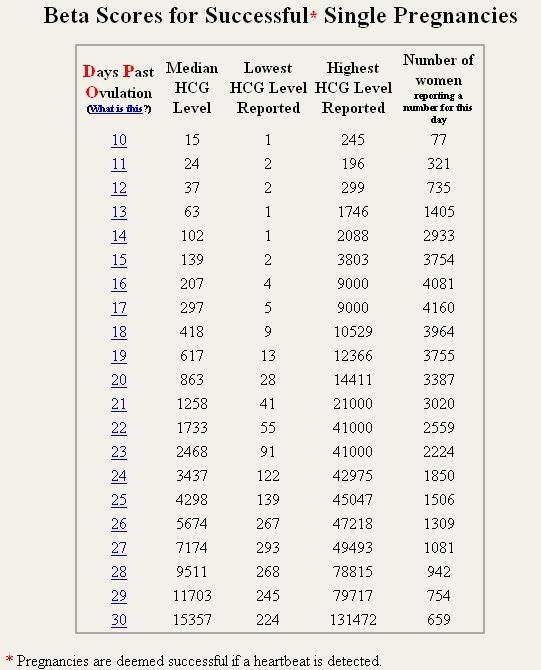
Thus, during pregnancy, the level of beta-hCG in the blood first increases and then decreases. According to this indicator, one can judge the successful course of pregnancy and identify violations of the development of the fetus. The hCG test in the blood is the most reliable method for determining pregnancy in the early stages. HCG appears in the body of a woman from 6-8 days after fertilization. A common rapid pregnancy test that every woman can use at home is also based on measuring hCG in the urine.
Below normal hormone levels at various stages of fetal development suggest ectopic pregnancy, fetal growth retardation, threatened miscarriage, non-progressive pregnancy, or placental insufficiency. The reason for the increased content of beta-hCG may be toxicosis, diabetes mellitus, or an incorrectly set gestational age. A high level of the hormone after a mini-abortion indicates a progressing pregnancy.
Determining the level of hCG is included in the triple test study, the results of which can be used to judge some anomalies in the development of the fetus, but an accurate diagnosis cannot be made. The study only allows you to classify a woman as a risk group for this pathology. In this case, further investigation is necessary. In non-pregnant women, CG is normally absent, but it can be secreted by some abnormal chorion-derived tissues (hydatidiform mole, chorionepithelioma) and some other tumors.
The study only allows you to classify a woman as a risk group for this pathology. In this case, further investigation is necessary. In non-pregnant women, CG is normally absent, but it can be secreted by some abnormal chorion-derived tissues (hydatidiform mole, chorionepithelioma) and some other tumors.
What is research used for?
- For the diagnosis of pregnancy, including multiple, ectopic and non-developing.
- To monitor the progress of pregnancy.
- To detect fetal growth retardation, threatened miscarriage, placental insufficiency.
- For the diagnosis of amenorrhea.
- To monitor the effectiveness of induced abortion.
- As part of a comprehensive examination to identify fetal malformations.
- For the diagnosis of CG-producing tumors.
When is the test ordered?
- If pregnancy is suspected, in particular multiple pregnancy.
- When monitoring the progress of pregnancy.

- When there is an assumption about a complication during pregnancy: fetal growth retardation, the threat of spontaneous abortion, non-developing or ectopic pregnancy, chronic placental insufficiency.
- Confirm successful induced abortion if necessary.
- With a comprehensive examination to identify fetal malformations.
- When finding out the reason for the absence of menstruation (amenorrhea).
- When is the diagnosis of tumors producing hCG.
What do the results mean?
Reference values
Floor | Week of pregnancy (from conception) | Reference values |
Female | Not pregnant | Less than 5 IU/L |
3 weeks | 5. | |
4 weeks | 9.5 – 750 IU/L | |
5 weeks | 217 – 7138 IU/L | |
6 weeks | 158 – 31795 IU/l | |
7 weeks | 3697 – 163563 IU/L | |
8 weeks | 32065 – 149571 IU/l | |
9 weeks | 63803 – 151410 IU/L | |
10 weeks | 46509 – 186977 IU/l | |
11-12 weeks | 27832 – 210612 IU/L | |
13-14 weeks | 13950 – 62530 IU/L | |
15 weeks | 12039 – 70971 IU/L | |
16 weeks | 9040 – 56451 IU/L | |
17 weeks | 8175 – 55868 IU/L | |
18 weeks | 8099 – 58176 IU/L | |
Male | Less than 5 IU/L |
Causes of high beta-hCG levels
In the absence of pregnancy, the result of the beta-hCG test should be negative. The detection of beta-hCG suggests that at least 5-6 days have passed since fertilization. Between the 2nd and 5th weeks of pregnancy, during its normal course, the level of beta-hCG doubles every 1.5 days and soon reaches its maximum. Then it starts to slowly decline. The results of the analysis are compared with the normal values for each gestational age. For a correct interpretation of the results, it is necessary to know exactly when the conception occurred.
The detection of beta-hCG suggests that at least 5-6 days have passed since fertilization. Between the 2nd and 5th weeks of pregnancy, during its normal course, the level of beta-hCG doubles every 1.5 days and soon reaches its maximum. Then it starts to slowly decline. The results of the analysis are compared with the normal values for each gestational age. For a correct interpretation of the results, it is necessary to know exactly when the conception occurred.
In pregnant women:
- multiple pregnancies (the rate increases in proportion to the number of fetuses),
- toxicosis,
- prolonged pregnancy,
- maternal diabetes mellitus,
- fetal malformations,
- taking synthetic hormones.
Not pregnant:
- hCG-producing tumors,
- surgical abortion (first 4-5 days after the procedure),
- taking hCG preparations.
Causes of low beta-hCG levels (during pregnancy):
- ectopic or non-developing pregnancy,
- fetal growth retardation,
- threatened miscarriage,
- chronic placental insufficiency,
- fetal death (in the 2nd-3rd trimester of pregnancy).

What can influence the result?
- When diagnosing pregnancy, taking the test too early – when less than 5 days have passed since conception – can lead to a false negative result.
Also recommended
- Alpha-fetoprotein (alpha-FP)
- Antiphospholipid antibodies IgG
- Antiphospholipid antibodies IgM
- Placental lactogen
- Free estriol
- Pregnancy – Prenatal screening for trisomies of the first trimester of pregnancy (Down syndrome), PRISCA
- Plasma pregnancy-associated protein A (PAPP-A)
- Pregnancy – Prenatal screening for trisomies of the second trimester of pregnancy, PRISCA
- Antibodies to steroid-producing cells of the placenta
Who orders the examination?
General practitioner, obstetrician-gynecologist, oncologist.
Literature
- Handbook of Clinical Laboratory Testing During Pregnancy, edited by Ann M.
 Gronowski. Springer-Verlag LLC, New York, 2004
Gronowski. Springer-Verlag LLC, New York, 2004 - Prenatal Diagnosis in Obstetric Practice. M. J. J. Whittle, Blackwell Publishers 1995
- Endocrinology of Pregnancy. Fuller W. Bazer, Humana Press 1998
- Blood Biochemistry. N J Russell, G M Powell, J G Jones, P J, Winterburn and J M Basford, Croom Helm, London and Canberra, 1982
- Blood Chemistry and CBC analysis-Clinical Laboratory Testing from a Functional Perspective. Rychard Weatherby N.D and Scott Fergusson, N.D., Bear Mounting Publishing, 2002.
- Tietz Clinical Guide to Laboratory Tests. Alan H. B. Wu, Saunders/Elsevier, 2006
- Laboratory and Diagnostic Tests. Joyce LeFever Kee – Pearson, Prentice Hall, 8th Edition 2010
- District Laboratory Practice in Tropical Countries. Monica Cheesbrough, Cambridge University Press, second edition, 2005.
- Clinical Chemistry. A Laboratory Perspective. Wendy L. Arneson, Jean M. Brickell, F.A. Davis Company, 2007
- Clinical Chemistry.
 Michael L. Bishop, Edward P. Fody, Larry E. Schoef, Lippincott Williams & Wilkins, 2005
Michael L. Bishop, Edward P. Fody, Larry E. Schoef, Lippincott Williams & Wilkins, 2005
hcg. What does this hormone show? Indications, preparation, interpretation
One of the main tests during pregnancy is the study of the level of the pregnancy hormone hCG or human chorionic gonadotropin.
HCG is a protein with hormonal activity, which begins to be produced by the tissue after implantation of the embryo as early as 6-8 days after fertilization of the egg and is one of the most important indicators of the presence and successful development of pregnancy.
HCG is necessary for the development and maintenance of pregnancy, it blocks the menstrual cycle and activates the production of other hormones necessary to maintain pregnancy – estrogen and progesterone.
In the future, monitoring of hCG is necessary for doctors to detect certain pathologies in the development of the fetus. The level of hCG rises not only during normal pregnancy, but also during ectopic, as well as within a few days after an abortion, and with some hormonally active tumors.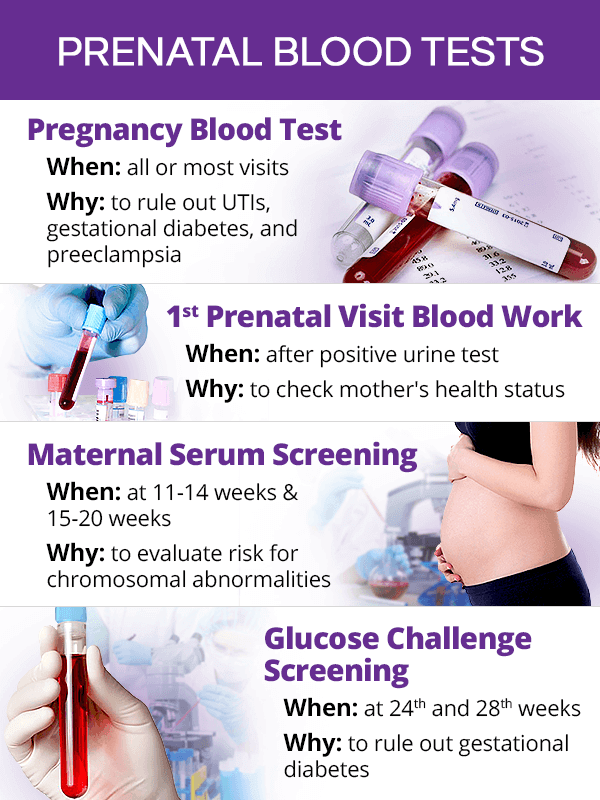
HCG in oncology is an indicator of a number of tumors (trophoblastic and testicular).
Main indications for use:
Screening of pregnant women in order to detect chromosomal abnormalities in the fetus in the first trimester (trisomy on chromosome 21 – Down syndrome, trisomy on chromosome 18), diagnosis of malignant tumors, as in women (hormepitemoma). So in men (testicular tumors)
The main functions of hCG in the body of a woman and fetus during pregnancy include:
1 – hCG, produced in the early stages of pregnancy in the tissues of the embryo, prevents abortion, which can occur when the endometrium peels off after implantation of eggs early stages of pregnancy
3-hCG induces the production of testosterone in the testes of the male fetus, before the birth of the child, which is necessary for the normal formation of male sexual characteristics
HCG is one of the earliest markers of pregnancy. Its concentration increases until the end of the first trimester, and then decreases
When preparing for donating blood for hCG, no restrictions on diet and diet are required
The main distorting factor is hemolysis.

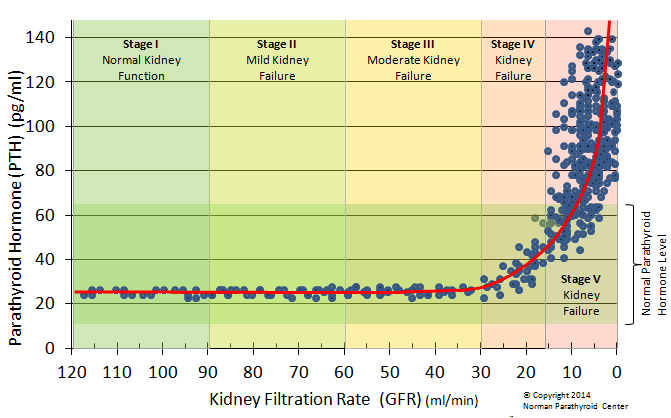 Seattle, WA
Seattle, WA Tumor Markers
Tumor Markers
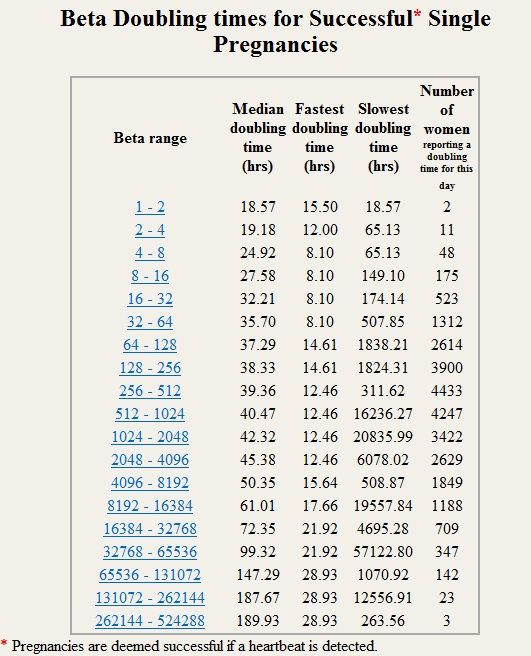 8 – 71.2 IU/L
8 – 71.2 IU/L
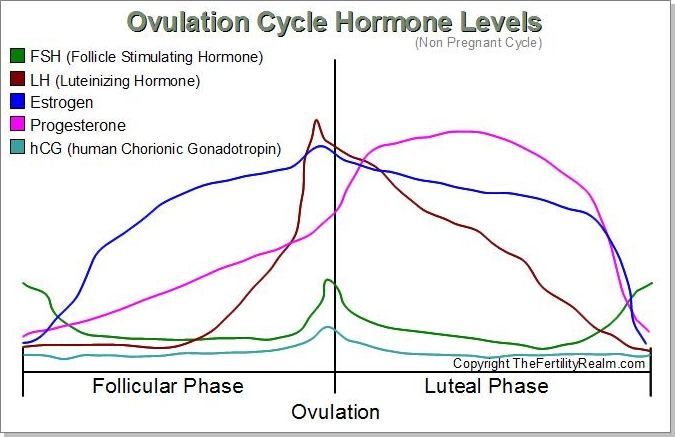 Gronowski. Springer-Verlag LLC, New York, 2004
Gronowski. Springer-Verlag LLC, New York, 2004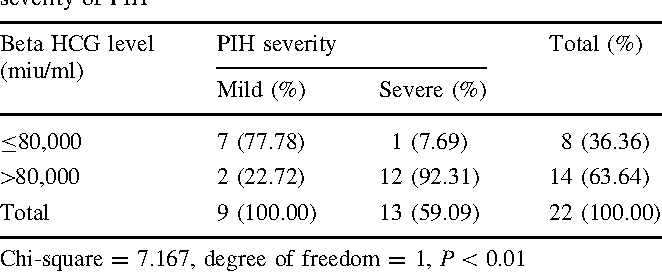 Michael L. Bishop, Edward P. Fody, Larry E. Schoef, Lippincott Williams & Wilkins, 2005
Michael L. Bishop, Edward P. Fody, Larry E. Schoef, Lippincott Williams & Wilkins, 2005